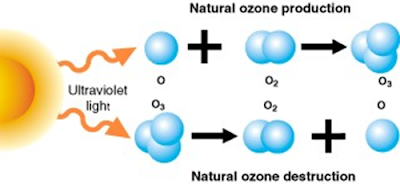As early as 1896, the Swedish scientist Svante Arrhenius had predicted that human activities would interfere with the way the sun interacts with the earth, resulting in global warming and climate change. His prediction has become true and climate change is now disrupting global environmental stability. The last few decades have seen many treaties, conventions, and protocols for the cause of global environmental protection.
Few examples of environmental issues of global significance are:
- Ozone layer depletion
- Global warming
One of the most important characteristics of this environmental degradation is that it affects all mankind on a global scale without regard to any particular country, region, or race. The whole world is a stakeholder and this raises issues on who should do what to combat environmental degradation.
${tocify}
Earth’s atmosphere is divided into three regions, namely troposphere, stratosphere and mesosphere. The stratosphere extends from 10 to 50 kms from the Earth’s surface. This region is concentrated with slightly pungent smelling, light bluish ozone gas. The ozone gas is made up of molecules each containing three atoms of oxygen; its chemical formula is O3.
The ozone layer, in the stratosphere acts as an efficient filter for harmful solar Ultraviolet B (UV-B) rays Ozone is produced and destroyed naturally in the atmosphere and until recently, this resulted in a well-balanced equilibrium.
Ozone is formed when oxygen molecules absorb ultraviolet radiation with wavelengths less than 240 nanometers and is destroyed when it absorbs ultraviolet radiation with wavelengths greater than 290 nanometers. In recent years, scientists have measured a seasonal thinning of the ozone layer primarily at the South Pole. This phenomenon is being called the ozone hole.
Ozone Depletion Process
Ozone is highly reactive and easily broken down by man-made chlorine and bromine compounds. These compounds are found to be most responsible for most of ozone layer depletion.
The ozone depletion process begins when CFCs (used in refrigerator and air conditioners) and other ozone-depleting substances (ODS) are emitted into the atmosphere. Winds efficiently mix and evenly distribute the ODS in the troposphere. These ODS compounds do not dissolve in rain, are extremely stable, and have a long life span. After several years, they reach the stratosphere by diffusion.
Strong UV light breaks apart the ODS molecules. CFCs, HCFCs, carbon tetrachloride, methyl chloroform release chlorine atoms, and halons and methyl bromide release bromine atoms. It is the chlorine and bromine atom that actually destroys ozone, not the intact ODS molecule. It is estimated that one chlorine atom can destroy from 10,000 to 100,000 ozone molecules before it is finally removed from the stratosphere.
Chemistry of Ozone Depletion
When ultraviolet light waves (UV) strike CFC* (CFCl3) molecules in the upper atmosphere, a carbon-chlorine bond breaks, producing a chlorine (Cl) atom. The chlorine atom then reacts with an ozone (O3) molecule breaking it apart and so destroying the ozone. This forms an ordinary oxygen molecule (O2) and a chlorine monoxide (ClO) molecule. Then a free oxygen** atom breaks up the chlorine monoxide. The chlorine is free to repeat the process of destroying more ozone molecules. A single CFC molecule can destroy 100,000 ozone molecules.
* CFC - chlorofluorocarbon: it contains chlorine, fluorine and carbon atoms.
** UV radiation breaks oxygen molecules (O2) into single oxygen atoms.
Effects of Ozone Layer Depletion
1) Effects on Human and Animal Health: Increased penetration of solar UV-B radiation is likely to have high impact on human health with potential risks of eye diseases, skin cancer and infectious diseases.
2) Effects on Terrestrial Plants: In forests and grasslands, increased radiation is likely to change species composition thus altering the bio-diversity in different ecosystems. It could also may affect the plant community.
3) Effects on Aquatic Ecosystems: High levels of radiation exposure in tropics and subtropics may affect the distribution of Phytoplankton’s, which form the foundation of aquatic food webs. It can also cause damage to early development stages of fish, shrimp, crab, amphibians and other animals, the most severe effects being decreased reproductive capacity and impaired larval development.
4) Effects on Bio-geo-chemical Cycles: Increased solar UV radiation could affect terrestrial and aquatic bio-geo-chemical cycles thus altering both sources and sinks of greenhouse and important trace gases, e.g. carbon dioxide (CO2 ), carbon monoxide (CO), carbonyl sulfide (COS), etc. These changes would contribute to biosphere-atmosphere feedbacks responsible for the atmosphere build-up of these greenhouse gases.
5) Effects on Air Quality: Reduction of stratospheric ozone and increased penetration of UV-B radiation result in higher photo dissociation rates of key trace gases that control the chemical reactivity of the troposphere. This can increase both production and destruction of ozone and related oxidants such as hydrogen peroxide, which are known to have adverse effects on human health, terrestrial plants and outdoor materials.
The ozone layer, therefore, is highly beneficial to plant and animal life on earth filtering out the dangerous part of sun’s radiation and allowing only the beneficial part to reach earth. Any disturbance or depletion of this layer would result in an increase of harmful radiation reaching the earth’s surface leading to dangerous consequences.


